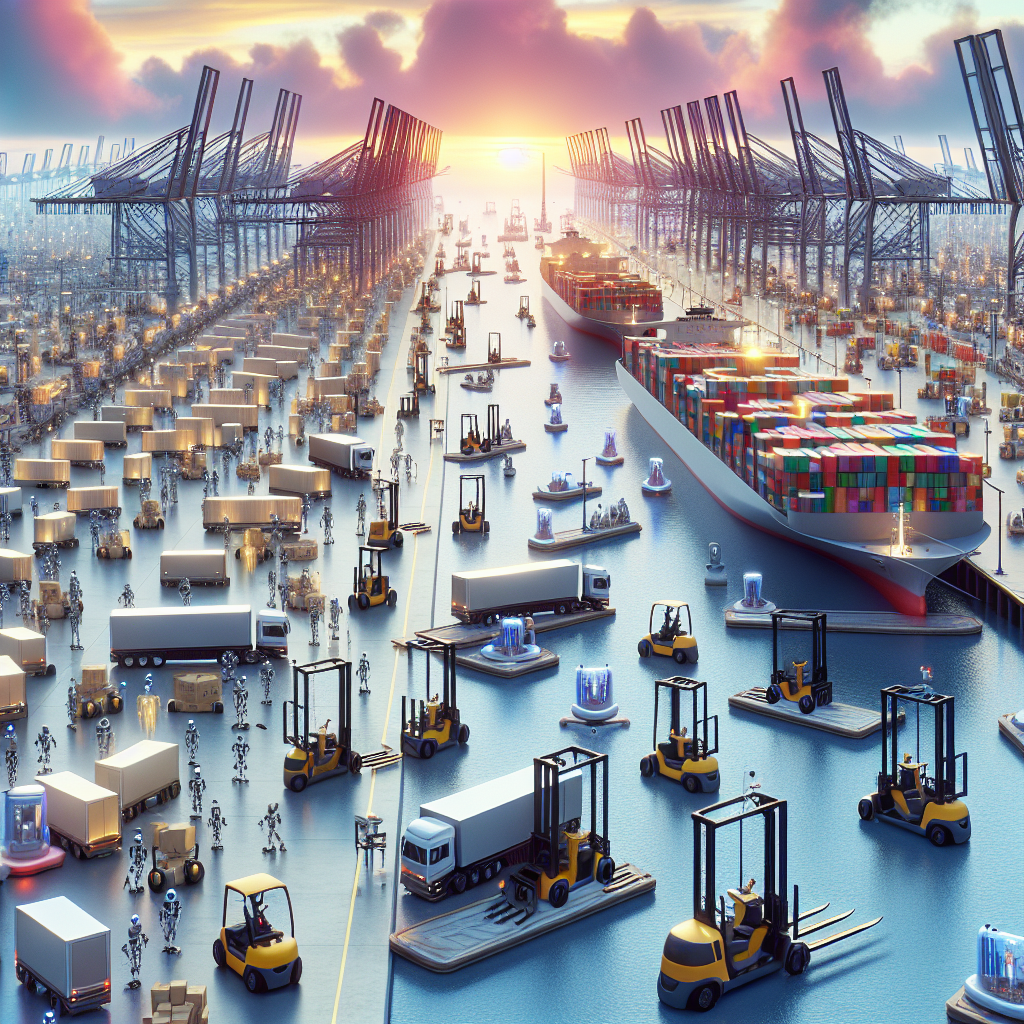The Role of AI in Autonomous Shipping and Delivery
Introduction
Advancements in artificial intelligence (AI) have revolutionized many industries, including shipping and delivery. Autonomous shipping and delivery systems are becoming more prevalent as AI technology continues to improve. These systems are designed to increase efficiency, reduce costs, and improve safety in the shipping and logistics sector. In this article, we will explore the role of AI in autonomous shipping and delivery, and how it is reshaping the industry.
AI in Autonomous Shipping
AI plays a crucial role in autonomous shipping, as it enables ships to navigate, make decisions, and complete tasks without human intervention. AI-powered systems use a combination of sensors, cameras, and algorithms to detect obstacles, map routes, and make real-time decisions based on the data they receive. These systems can analyze vast amounts of information quickly and accurately, allowing ships to navigate complex waterways and avoid collisions.
One of the key benefits of AI in autonomous shipping is increased safety. AI-powered systems can detect potential hazards and make split-second decisions to avoid accidents. This reduces the risk of human error, which is a significant factor in maritime accidents. By using AI, ships can operate more safely and efficiently, leading to fewer accidents and improved overall performance.
AI in Autonomous Delivery
AI is also playing a crucial role in autonomous delivery systems, such as drones and autonomous vehicles. These systems use AI algorithms to navigate, plan routes, and deliver packages to their destinations. AI-powered drones can avoid obstacles, navigate in adverse weather conditions, and deliver packages quickly and efficiently. Autonomous delivery vehicles can use AI to optimize routes, avoid traffic, and deliver packages on time.
AI-powered delivery systems offer significant benefits for both businesses and consumers. Businesses can reduce costs, increase efficiency, and improve customer satisfaction by using AI to automate delivery processes. Consumers can enjoy faster delivery times, more accurate tracking information, and a seamless delivery experience. AI-powered delivery systems are revolutionizing the way goods are transported and delivered, making it easier and more convenient for businesses and consumers alike.
Challenges and Opportunities
While AI technology holds immense promise for autonomous shipping and delivery, there are still challenges that need to be addressed. One of the main challenges is regulatory approval. Autonomous shipping and delivery systems must meet strict safety and regulatory standards before they can be deployed on a large scale. Governments and regulatory bodies are still in the process of developing guidelines and regulations for autonomous systems, which can slow down the adoption of AI in shipping and delivery.
Another challenge is the integration of AI with existing infrastructure and systems. Many shipping and logistics companies have existing processes and systems in place that may not be compatible with AI technology. Integrating AI into these systems can be complex and time-consuming, requiring significant investment in training and infrastructure upgrades.
Despite these challenges, the opportunities for AI in autonomous shipping and delivery are vast. AI technology has the potential to transform the shipping and logistics industry, making it more efficient, cost-effective, and environmentally friendly. By using AI-powered systems, companies can reduce fuel consumption, optimize routes, and minimize emissions, leading to a more sustainable and eco-friendly transportation system.
FAQs
Q: Are autonomous shipping and delivery systems safe?
A: Autonomous shipping and delivery systems are designed to be safe and reliable. AI-powered systems use advanced sensors and algorithms to detect obstacles, plan routes, and make decisions in real-time, reducing the risk of accidents and improving overall safety.
Q: How do AI-powered drones navigate in adverse weather conditions?
A: AI-powered drones use a combination of sensors, cameras, and algorithms to navigate in adverse weather conditions. These systems can detect obstacles, adjust their flight path, and make split-second decisions to avoid accidents, even in challenging weather conditions.
Q: What are the benefits of using AI in autonomous shipping and delivery?
A: Using AI in autonomous shipping and delivery systems offers numerous benefits, including increased safety, reduced costs, improved efficiency, and faster delivery times. AI technology can optimize routes, avoid traffic, and deliver packages more quickly and accurately than traditional methods.
Q: What are the challenges of integrating AI into existing shipping and delivery systems?
A: Integrating AI into existing shipping and delivery systems can be challenging, as it requires significant investment in training, infrastructure upgrades, and regulatory approval. Companies must also ensure that AI technology is compatible with existing processes and systems, which can be complex and time-consuming.
Conclusion
AI technology is revolutionizing the shipping and delivery industry, enabling ships, drones, and autonomous vehicles to operate more safely, efficiently, and effectively. By using AI-powered systems, companies can reduce costs, increase efficiency, and improve customer satisfaction. While there are challenges to overcome, the opportunities for AI in autonomous shipping and delivery are vast. As technology continues to improve, we can expect to see more autonomous systems deployed in the shipping and logistics sector, reshaping the industry and driving innovation in the years to come.

